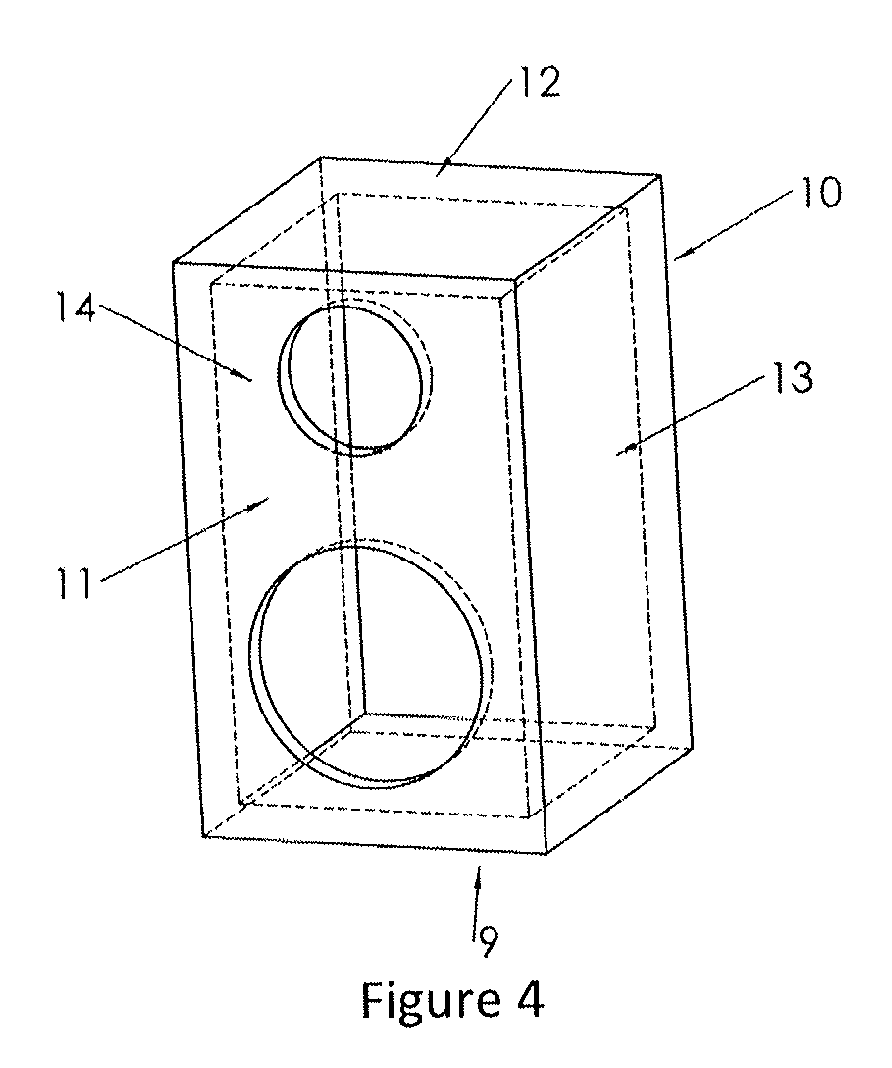Laminated glass & laminated acrylic loudspeaker enclosure
a loudspeaker enclosure and laminated glass technology, applied in the field of loudspeakers, can solve the problems of undesirable enclosure-based sonic output, introducing distortion and colouration to the sound, and sonic output is somewhat delayed, so as to improve acoustic quality and enhance acoustic outpu
- Summary
- Abstract
- Description
- Claims
- Application Information
AI Technical Summary
Benefits of technology
Problems solved by technology
Method used
Image
Examples
Embodiment Construction
[0085]Preferred embodiments of the present invention will be described below by making reference to FIGS. 1 to 19 of the drawings.
[0086]The present invention was developed for use in a high performance high fidelity audio system.
[0087]Laminated glass was invented in 1903 by the French chemist Edouard Benedictus. It was widely used in the eyepieces of gas masks during World War I. After the war it became increasingly used by automobile manufacturers for windscreens. Early versions of laminated glass often used cured resin as the interlay material.
[0088]Modern laminated glass, as illustrated in FIG. 1 is typically produced by bonding two or more layers of float or annealed glass 1&3 together with an interlayer 2, typically polyvinyl butyral (PVB) or ethylene vinyl acetate (EVA) copolymer thermoplastics. The interlayer is sandwiched between glass lites of equal or unequal thickness which are passed through rollers to expel any air pockets to form an initial bond, which is then complete...
PUM
 Login to View More
Login to View More Abstract
Description
Claims
Application Information
 Login to View More
Login to View More - R&D
- Intellectual Property
- Life Sciences
- Materials
- Tech Scout
- Unparalleled Data Quality
- Higher Quality Content
- 60% Fewer Hallucinations
Browse by: Latest US Patents, China's latest patents, Technical Efficacy Thesaurus, Application Domain, Technology Topic, Popular Technical Reports.
© 2025 PatSnap. All rights reserved.Legal|Privacy policy|Modern Slavery Act Transparency Statement|Sitemap|About US| Contact US: help@patsnap.com



